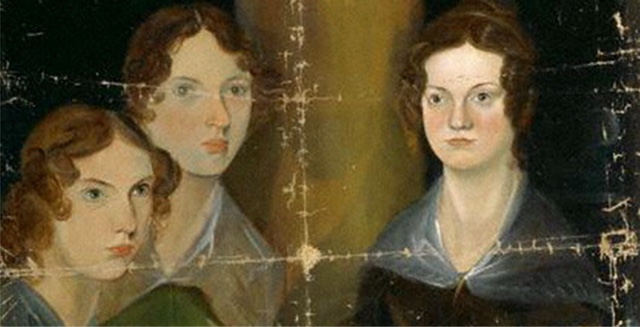The Brontës and Waterloo: 10 Things I Learned
The Brontë sisters, by Branwell Brontë. Credit: The Brontë Society.
I've just got back from Brontë Parsonage, Haworth (not far from where I live) where I went to see a special exhibition on "The Brontës, War and Waterloo." It was absolutely fascinating. If you're in the area, go and see it! For those who live further afield, here are 10 things I learned from it:
1. All the Brontës were huge fans of the Duke of Wellington. The Rev. Patrick even wrote him what was basically fan mail. The Duke's reply (in display in the museum) is typically scathing. Poor man!
2. They had a love/hate relationship with Napoleon too (especially Branwell). Since Napoleon was a Byronic hero to Lord Byron himself, and the Brontës were big fans of Byron (later producing those famously Byronic heroes Heathcliff and Mr Rochester), you can understand the tug of emotions.
3. It all began with a box of toy soldiers bought for Branwell. When told they could choose one each, Charlotte and Branwell immediately named theirs Wellington and Napoleon, and went on to create adventures for them, which expanded into whole fantasy worlds.
4. As children and teenagers, the Brontës were basically fantasy role-players. They collaborated together to build worlds and stories, full of battles, empire building and bitter rivalries. The Glass Kingdom Federation created by Charlotte and Branwell sounds to me like an ideal concept for online gaming. If someone hasn't adapted it yet, they probably should.
5. Most of their knowledge of the Napoleonic Wars came from a 1827 biography of Napoleon by Sir Walter Scott. The Brontës were big fans of Scott, too. Why am I not surprised?
6. In Charlotte and Branwell's fantasy world, the Duke of Wellington was ruler of Glass Town and lived in Waterloo Palace. He headed up the Glass Town Federation, a group of colonies on the West Coast of Africa, run by a dozen eminent men known as The Twelve.
7. In the next generation of the Glass Kingdom, a new country called Angria joins the Federation. It is ruled by Wellington's son, Zamora and his Prime Minister, Alexander Percy, who is basically a version of Napoleon. Cue civil wars, betrayals, banishments and battles.
8. In a civil war of the nursery, Emily and Anne defected from the Glass Kingdom to create their own fantasy empire, Gondal. Described as an island in the North Pacific, its landscape resembled Yorkshire and Scotland, and was divided into four kingdoms ruled by rival families. Many of the Gondal writings are now lost, but its rivalries and tensions seem to have fed into Wuthering Heights. Many surviving poems focus on the relationship between strong-willed Augusta Geraldine Almeida and her lover Julius Brenzaida, a sort of proto Cathy and Heathcliff.
9. Charlotte once wrote a story similar to "A Christmas Carol" in which Napoleon is led around Paris by the spectre of his general, Jean-Charles Pichegru, to show him the error of his ways.
10. The Brontë sisters may have visited the site of Waterloo itself. We can't know for sure, but they did spend time in Belgium, studying with tutor Constantin Heger, who gave Charlotte a piece of Napoleon's coffin.





The article has really peaks my interest.Wellington Tutoring I am going to bookmark your site and preserve checking for new information.
ReplyDeleteThis is a very useful post, I was looking for this info.Palm Beach Tutoring thanks for sharing the great ideas...
ReplyDelete